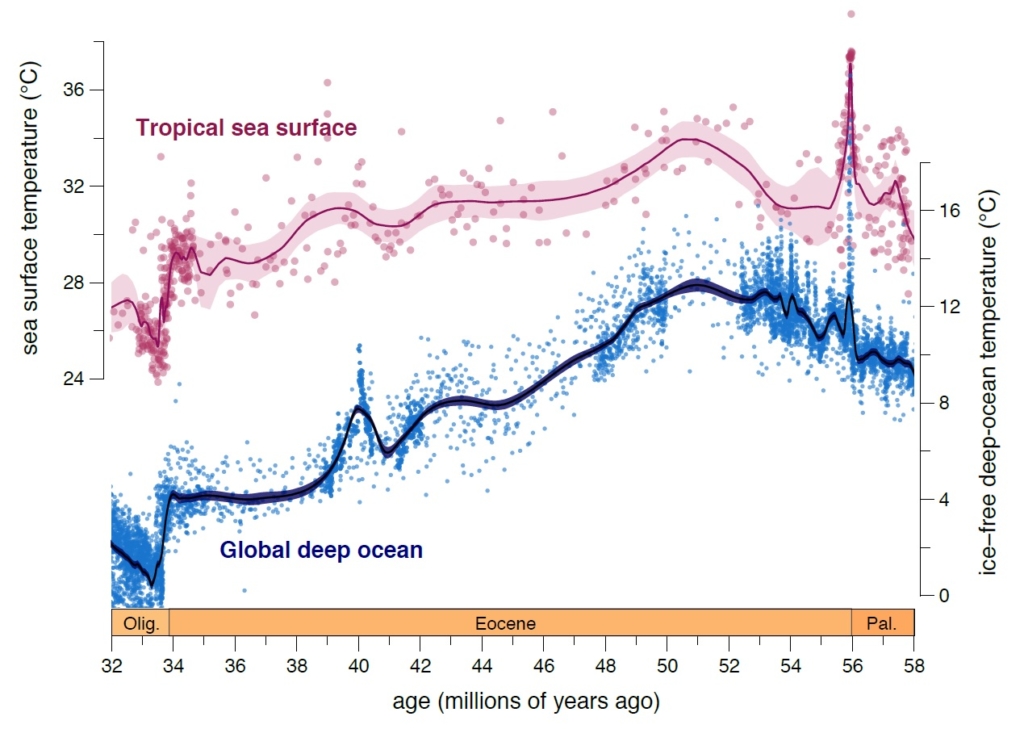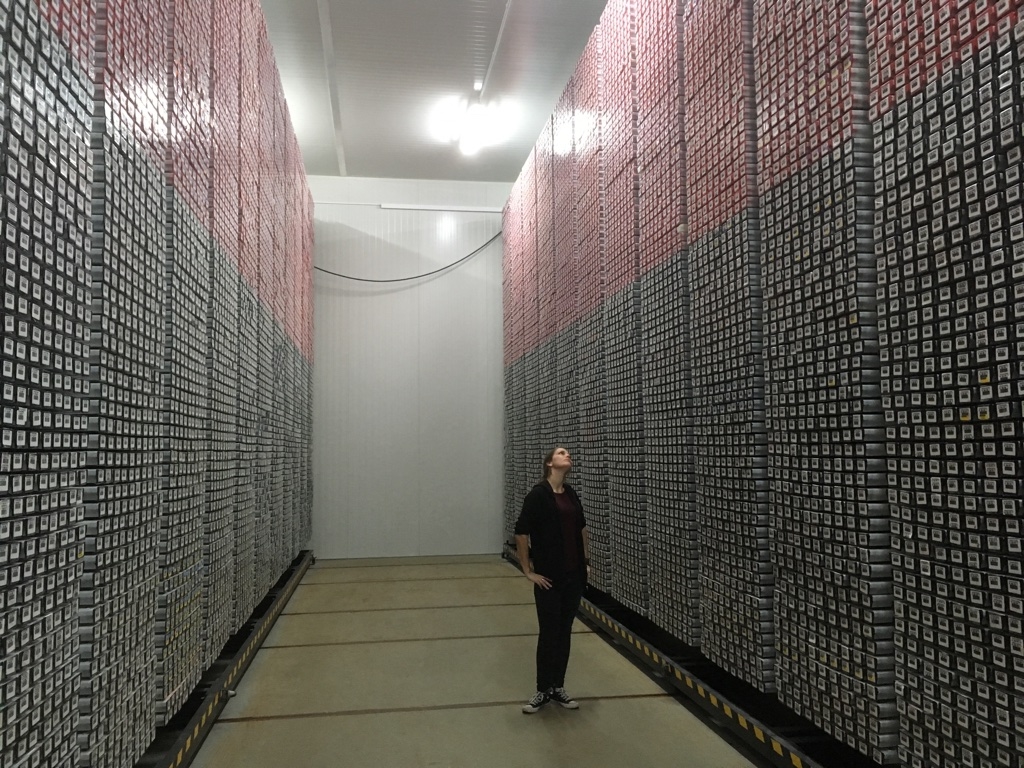Stronger polar warming caused by rising CO2-levels
Polar regions warm up stronger due to increasing CO2, even when they were ice-free, new NESSC-research shows. A new reconstruction of ocean temperatures during the Eocene, a geological time period from 56 to 34 million years ago when both of Earth’s poles were not covered by ice and snow, shows that the concentration of atmospheric CO2 determines the changing temperatures of the entire planet, and that temperatures changed more in polar regions than in the tropics. The findings are published today in the leading science journal Nature.
Over the past decades, the Arctic region has warmed almost twice as fast compared to the rest of the world as global greenhouse gas concentrations continued to increase. An important cause of the higher rate of warming in the Arctic is the melting of ice and snow: this melting exposes darker surfaces, which then warm faster. However, this polar amplification of climate change has additional causes, but these have been hard to study or quantify in the presence of snow and ice at the poles.

Ice free planet
Earth scientists found a way around this problem by studying a geological period when Earth’s poles were not yet covered by ice. NESSC-researcher Margot Cramwinckel, who is also first author of the paper, reconstructed ocean temperatures during the Eocene, a time period between 56 and 34 million years ago. At the start of this period polar temperatures were subtropical, but they gradually cooled over the course of millions of years, ultimately leading to ice sheet growth on Antarctica. Cramwinckel: “The main driver behind this cooling remained a mystery: was the polar cooling driven by decreasing greenhouse gas concentrations, or was it a result of changes in ocean circulation that distributed less and less heat towards the poles?”
Uniquely, Cramwinckel and colleagues reconstructed the history of surface water temperatures in the tropics during the Eocene, and compared this new record with existing temperature reconstructions of the polar regions. The results show beyond any doubt that also tropical regions cooled. Cramwinckel: “We show that temperature trends at both the poles and the tropics are fully synchronous – which means that the influence of changing ocean currents during the Eocene was small. Decreasing greenhouse gas concentrations were the main driver behind long-term climate change.”

Sea level rise
Importantly, the study conclusively shows that temperature changes at the poles in the Eocene were much stronger compared to the tropics. This delivers the first hard evidence for the effects of polar amplification of the planet, the phenomenon whereby an increase of greenhouse gases leads to larger temperature changes at the poles compared to the rest of the earth.
Cramwinckel: “Our study proves that, even in the ice free world of the Eocene, CO2-driven temperature changes are much stronger in polar regions compared to the rest of the planet. For the first time we can now estimate by how much. Together with the melting of ice and snow, this will also determine polar warming in the future. For low-lying regions, like Bangladesh, Florida and the Netherlands, this is of great importance for making better projections of the expected sea level rise in the future.”

Article:
Synchronous tropical and polar temperature evolution in the Eocene
Nature, 2018.
Margot J. Cramwinckel, Matthew Huber, Ilja J. Kocken, Claudia Agnini, Peter K. Bijl, Steven M. Bohaty, Joost Frieling, Aaron Goldner, Frederik J. Hilgen, Elizabeth L. Kip, Francien Peterse, Robin van der Ploeg, Ursula Röhl , Stefan Schouten, and Appy Sluijs

